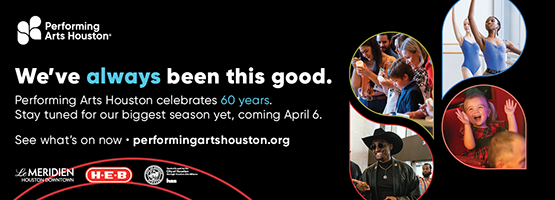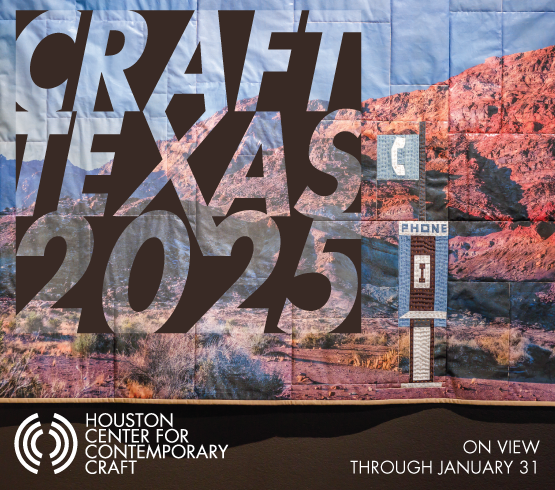“Migration is beautiful.” These are the words the viewer reads upon entering the San Antonio Museum of Art’s newest exhibition, No Ocean Between Us, on view at the San Antonio Museum of Art Feb. 12-May 9, 2021.
Co-curated by Lucía Abramovich Sánchez and Yinshi Lerman-Tan, the exhibition features 67 works by 38 modern and contemporary artists from 10 Latin American and Caribbean countries. Each artist works from experiences of immigration from Asian countries like China, India, Indonesia, and Japan to the Americas.
The exhibition’s scope is geographically and chronologically far-reaching. Artworks from the post-World War II era to the present encompass a wide variety of media and a fascinating mix of local and international artistic movements. Despite its broad lens, No Ocean Between Us doesn’t attempt to generalize or simplify this crucially under-represented group of artists. Instead, the show offers a panoramic view of their multifaceted diasporic experiences.
Not all of the panorama is positive. Many of the artists are descended from immigrants who came to Latin America and the Caribbean to work grueling jobs in mining, textile manufacturing, and on plantations. They faced discrimination, displacement, and in some former European colonies, indentured labor. The exhibition’s bilingual Spanish and English didactic texts highlight how these hardships ultimately informed the artists’ perspectives and practices.
“Lam exemplifies both working across the European avant-garde movements, but also being invested in legacies of enslavement, labor, and cultural identity as a mixed-race artist in Cuba,” Lerman-Tan explained. The featureless face of the young woman in his 1982 lithograph Retrato seems to suggest Black beauty as a universal truth. In a 1980 interview, Lam declared, “My painting is an act of decolonization,” and this piece recalls the artist’s collaboration with Négritude, an international cultural movement elevating Afro-diasporic Blackness.
Another featured artist, Mohammed Pharouk Alladin (1919-1980) was born in Trinidad and Tobago to an Indo-Trinidadian Muslim family. “It’s important to demonstrate the diversity of the Latin American experience and move away from what popular culture considers to be Latinidad,” Abramovich Sánchez emphasized. Alladin was a good example of that: he was fluent in Hindu, Urdu, and Arabic, along with Spanish and English. After studying in the United Kingdom and New York City, he returned to Trinidad, where he devoted his professional life to public service. Alladin worked as a teacher, and later in his country’s Ministry of Education and Culture, and wrote about Trinidad’s local customs. His 1973 painting Las Palmas (The Palms) rejects easy stereotypes. In it, Aladdin’s densely woven, angular black lines convert scenic swaying palm fronds into a sharp, layered mesh. The piece presents a decidedly more ambivalent view of idyllic island life.

1 ⁄10
Soeki Irodikromo, Untitled, 1986, oil on canvas. © OAS AMA | Art Museum of the Americas Collection. Gift of the Government of Suriname.

2 ⁄10
Wilfredo Lam, Retrato, 1982, lithograph. © OAS AMA | Art Museum of the Americas Collection.

3 ⁄10
M. P. Alladin, Las Palmas (The Palms), 1973, acrylic on canvas. © OAS AMA | Art Museum of the Americas Collection.

4 ⁄10
Manabu Mabe, Solemn Pact, 1980, acrylic and oil on canvas. © OAS AMA | Art Museum of the Americas Collection.

5 ⁄10
Carlos Runcie Tanaka, Vessel Object, 1989, clay. © OAS AMA | Art Museum of the Americas Collection.

6 ⁄10
Tomie Ohtake, Untitled, 1968, oil on canvas. © OAS AMA | Art Museum of the Americas Collection.

7 ⁄10
Arturo Kubotta, Cosmic Sedimentation, 1963, mixed media. © OAS AMA | Art Museum of the Americas Collection. Gift of Bernice Weinstein.

8 ⁄10
Venancio Shinki, Tierras Bien, c. 1968, oil on canvas. © OAS AMA | Art Museum of the Americas Collection.

9 ⁄10
Tikashi Fukushima, Verde (Green), 1972, oil on canvas. © OAS AMA | Art Museum of the Americas Collection.

10 ⁄10
Yutaka, Toyota, Em Tempo Anterior ao Nada (In the Time before Nothing), 1970, mixed media. © OAS AMA | Art Museum of the Americas Collection.
Merging influences is the foundation of Tomie Ohtake’s (1913-2015) sublime works. In her 1968 oil painting Untitled, two violet rectangles curve towards each other, gently touch, and then diverge again. The flowing forms are emblematic of Ohtake’s minimalistic, harmonious style. They also recall the two sites of Ohtake’s life story: Japan and Brazil, where there are over 1.5 million people of Japanese descent today.
Kyoto-born Ohtake was visiting her brother in São Paulo when the Sino-Japanese War broke out, so she stayed. She began making art about a decade later, and joined the Seibi-Kai art collective in 1953. Ohtake’s calligraphic art works are inspired by the condensed beauty of haiku. Her bold colors and gestural marks relate not only to a number of other Japanese Brazilian artists working at the time, but to larger currents in abstract expressionism.
These are just four extraordinary artists from an exhibition that offers many opportunities for discovery. “I hope that visitors come away with a renewed sense of the contribution that these artists of Asian descent have made, and also of the rich cultural fabric that exists in Latin America and the Caribbean,” Lerman-Tam said. By shining a spotlight on these important but often overlooked artists, the show also illuminates an essential part of Latin American and Caribbean history.
—LAUREN MOYA FORD




